Technology

5 min
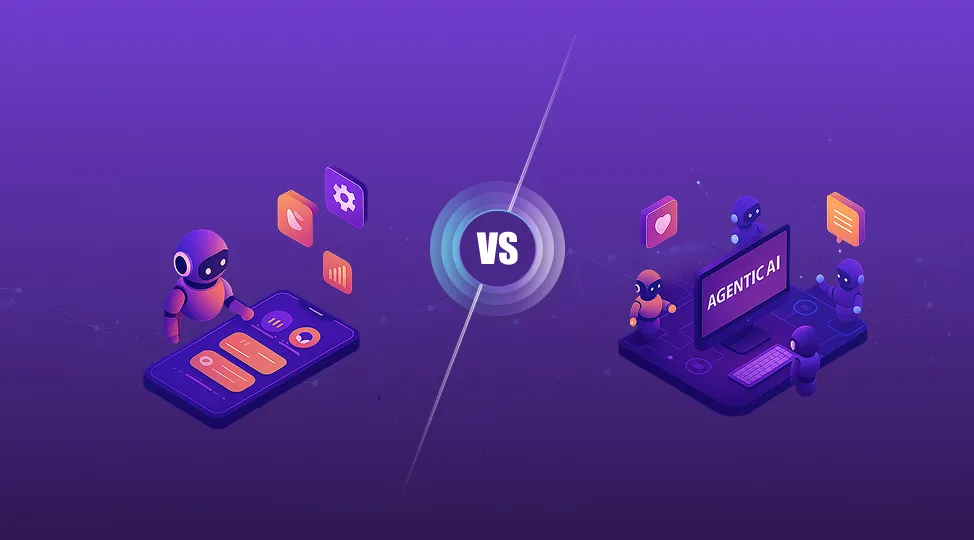
AI agents tackle defined tasks, while Agentic AI brings higher autonomy, collaboration, and adaptability to complex workflows. This guide explores their differences, real-world use cases, and the latest trends shaping enterprise AI.

By Garima Saxena
27 Aug, 2025
When you hear about AI in business, you're likely thinking about smarter tools that make work easier. But there's an essential difference between a single AI agent and a more advanced concept called Agentic AI. While both use AI-powered automation to complete tasks, they operate on entirely different scales. Understanding this distinction is key to choosing the right enterprise AI solutions for your business
We’ve compiled a list of real examples to illustrate the key differences between AI agents and Agentic AI, including their implementation, AI agent frameworks, and structural differences.
An AI agent is a software system that is designed to interact with its surroundings. It gathers information, analyzes it, makes decisions, and performs actions to solve a particular problem accordingly.
It possesses reasoning, planning, and memory skills and can operate with a certain level of autonomy.
AI agents are primarily enabled by multimodal generative AI and foundation models, which are well-versed in processing various types of information, including text, voice, and code. They can engage in conversations, reason, learn, and make decisions.
AI agents can be categorized based on their complexity and the way they interact with their environment and make decisions. Some common types include:
1. Simple Reflex Agents
These are basic AI agents that react directly to current environmental conditions based on predefined "if-then" rules. They have no memory of past experiences.
Use Cases:
When to Use: Best for fully observable, static, predictable environments requiring immediate, rule-based responses. Ideal for straightforward, repetitive tasks.
2. Model-Based Reflex Agents
More advanced, these agents maintain an internal "model" of the world, tracking its state and understanding how past actions affect it. This memory enables more informed decisions, even in partially observable environments.
Use Cases:
When to Use: It can be used in dynamic or partially observable environments, in which decisions are improved by the use of context and history.
3. Goal-Based Agents
These agents have explicit goals and plan actions to achieve them, evaluating different sequences to find the most efficient path. They focus on reaching a desired outcome.
Use Cases:
When to Use: Best at problems whose end states can be well defined, applicable in problem-solving, navigation, and planning.
4. Utility-Based Agents
These agents are designed to optimize some utility function to measure the desirability of outcomes, when there is conflict between the various factors, such as speed and cost or safety. They want to do the best thing to accomplish something.
Use Cases:
When to Use: Needed in complex and dynamic systems where there are multiple objectives or competing goals, in which one needs optimized, subtle decision-making.
5. Learning Agents
These agents continuously improve performance by analyzing experiences, adapting behavior, and refining internal models or rules. They learn from feedback, data, or exploration.
Use Cases:
When to Use: Crucial for complex, uncertain, or changing environments where continuous improvement and adaptability are vital.
6. Multi-Agent Systems
This AI agent type involves multiple AI agents collaborating whose task is to achieve common or individual goals within a shared environment. These AI agents coordinate, share info, and resolve conflicts for functions too complex for a single agent.
Use Cases:
💡 Suggested Read: Top AI Agent Frameworks
Agentic AI refers to the development of highly autonomous systems that can make decisions and take action with minimal human oversight.
It's the next step beyond a single AI agent. Think of it as an ecosystem of multiple AI agents working together to accomplish large, complex business tasks. This is not about one tool doing one thing; it's about a whole system working to solve a problem.
Agentic AI doesn't just follow rules. It can perceive a situation, reason through it, plan a series of steps, and then act to reach a goal.
It can also adapt its behavior to a situation, learn from its interactions, and even generate and work on new ideas. This is why it's a game-changer for businesses—it can take on tasks that were previously too big or too complicated for a single AI agent.
💡 Suggested Read: How to Build Agentic AI Systems
High Autonomy: Agentic AI systems can work and make decisions on their own, with very little need for a person to intervene. This allows them to handle complex, multi-step tasks from beginning to end.
Proactive Planning: Unlike basic systems that only react to a prompt, Agentic AI can break down a large goal into smaller tasks, create a plan, and then execute it independently. It can even adjust the plan if the situation changes.
Adaptability and Learning: These systems are designed to learn from their environment and past experiences continuously. They can take in new information and adapt their behavior to improve their performance over time.
Multi-Agent Collaboration: The power of Agentic AI often comes from multiple specialized AI agents working together to solve a complex problem. This teamwork allows them to tackle tasks that a single agent could not handle alone.
Tool Integration: Agentic AI can connect with other business tools, databases, and software through APIs. This enables them to complete a full workflow, including finding information, analyzing it, and then taking action in an external system.
Agentic AI systems are complex and can be categorized based on their operational mechanisms and purpose. They go beyond the single-agent concept by focusing on collaboration and advanced autonomy.
1. Multi-Agent Systems
This is the most common type of Agentic AI. It's a system where multiple specialized AI agents work together to achieve a shared goal. Each agent has a different role, and they coordinate, share information, and resolve conflicts to handle tasks that would be too complex for a single agent. Think of it as a team of experts working together.
2. Proactive vs. Reactive Systems
3. Specialized Agents
Within a multi-agent system, agents often have specialized functions. For example, a Data Agent might focus on analyzing large data sets and finding insights. A Code Agent could write and review code to accelerate software development. These specialized agents are combined to create a powerful system capable of tackling complex projects.
Having explored the various types of AI agents, we can now clearly see the key differences when comparing them to Agentic AI.
Now that we've explored the types of AI agents and Agentic AI, let's examine their core differences. The distinction between Agentic AI vs AI Agents is not just in their names; it’s about their scope, autonomy, complexity, and decision-making capabilities. While they both use artificial intelligence, they are built to solve problems on entirely different scales.
| Aspect | AI Agents | Agentic AI |
|---|---|---|
| Scope of Work | Narrow and Domain Specific | Broad, multi-domain and cross-functional |
| Handling Goals | Executes predefined tasks with set rules and protocols | Handles high-level goals and self-generates sub-goals |
| Autonomy | Very limited; relies on human inputs or strict rules | Very high; operates independently and makes decisions on its own |
| Adaptability | Static behavior; negligible learning beyond training | Dynamic; adapts based on data, feedback, and past actions |
| How it Learns | Mostly pre-trained | Pre-trained and continuously improves through interactions and experiences |
| Complexity of Tasks | Handles simple or repetitive tasks | Handles complex, multi-step, and multi-context workflows |
| Tool Usage | Limited to pre-programmed integrations | Dynamically uses APIs, tools, and other AI models |
| Human Intervention | Requires frequent human prompts and inputs | Requires minimal intervention once the objective is defined |
| Example | IVR call system, spam filter | AutoGPT, Devin AI, autonomous marketing and research agents |
Now that we’ve clarified the fundamental differences between Agentic AI and AI agents, the next logical step is to see how these systems actually create value in practice. Let’s start with real-world use cases of AI agents across industries.
AI agents are being introduced into multiple spheres of business to make them more efficient through automation. Some prominent examples of use-cases are:
Agentic AI systems, with their higher autonomy and collaborative capabilities, are transforming complex operations across sectors:
The AI landscape is evolving at an unprecedented pace. Both AI agents and Agentic AI are moving from theory into real-world adoption, and several key trends are shaping their future:
Voice-driven agents are no longer just command-based. They can now detect tone, urgency, and sentiment, enabling more natural and empathetic enterprise interactions.
By combining generative AI with real-time search, RAG agents ensure responses are not only contextual but also grounded in the latest data, moving beyond static knowledge bases.
Organizations are embracing agent-to-agent communication protocols, turning isolated bots into collaborative digital teams that eliminate silos and reduce response times.
Specialized research agents can analyze weeks of unstructured data in minutes, providing executives with concise, decision-ready insights.
Beyond assisting with syntax, coding agents are evolving into full-fledged engineering partners writing production-ready code, fixing bugs, refactoring legacy systems, and exploring unfamiliar frameworks autonomously.
Future-ready agents leverage supervised, unsupervised, and reinforcement learning to adapt dynamically, making them more capable of handling unpredictable environments.
As autonomy grows, so does the focus on fairness, transparency, and compliance. Ethical AI frameworks are becoming a critical part of enterprise deployment strategies.
In summary, while AI agents excel at handling specific, well-defined tasks, Agentic AI represents the next leap—bringing autonomy, adaptability, and collaboration to complex enterprise challenges. From streamlining HR operations to securing supply chains, the shift toward Agentic AI signals a future where systems don’t just respond but proactively plan, learn, and optimize. For businesses, the key lies in understanding when a simple agent is sufficient and when to invest in Agentic AI to unlock long-term value. An AI development company can help guide this transition. Embracing this evolution will help organizations stay competitive, resilient, and prepared for the AI-driven future.
Generative AI Implementation Strategy: From Concept to Deployment (Step-by-Step Guide)
By Sannidhya Sharma
5 min read
How to Design a Web App: From Wireframes to Working Prototype
By Dhruv Joshi
5 min read
How Much Does Generative AI Development Cost in 2026?
By Dhruv Joshi
5 min read
How to Build an AI Adoption Roadmap That Ensures Measurable ROI
By Garima Saxena
5 min read
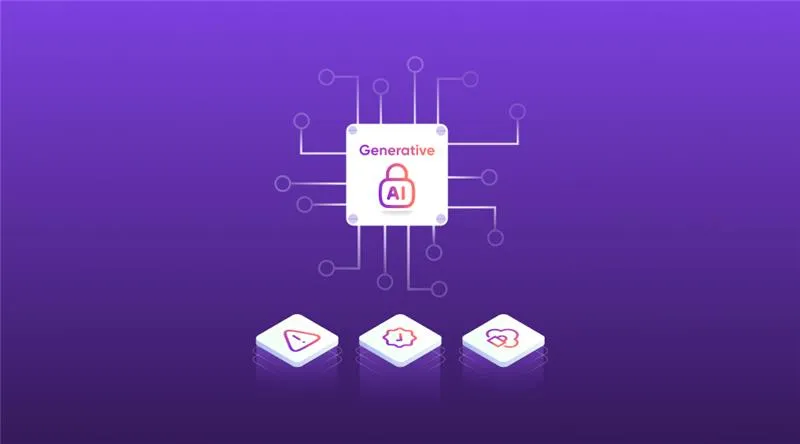
Technology

7 min
Generative AI is moving fast into enterprises, from banks to hospitals to government agencies. Adoption is rapid, but security planning lags. Unlike traditional systems, these models can be exploited through prompt injection, poisoned data, or manipulated to leak sensitive information. They are also misused for phishing, deepfakes, and malicious code.

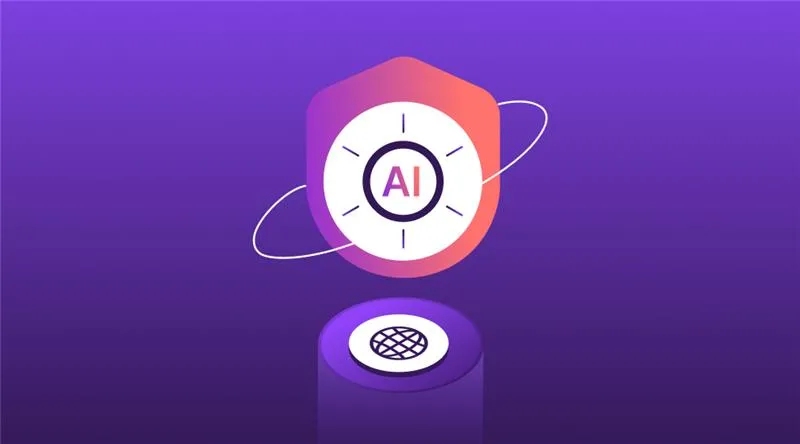
Technology

7 min
AI-powered Web Application Firewalls (WAFs) go beyond static rules by using machine learning, anomaly detection, and predictive analysis to block zero-day threats, reduce false positives, and protect APIs at scale. Unlike traditional WAFs, they self-learn, adapt in real time, and cut operational costs while improving compliance and trust.

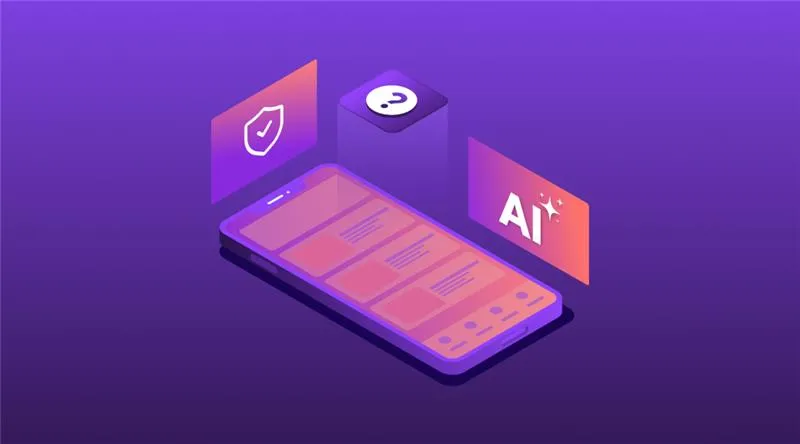
Technology

5 min
AI is redefining mobile app security by transforming how threats are detected, tested, and prevented. From continuous monitoring and fraud detection to compliance with regulations, AI ensures apps remain resilient against modern risks. This means safer apps, protected users, and stronger businesses. Investing in AI-driven security today builds trust, drives growth, and secures long-term competitive advantage.

Feeling lost!! Book a slot and get answers to all your industry-relevant doubts